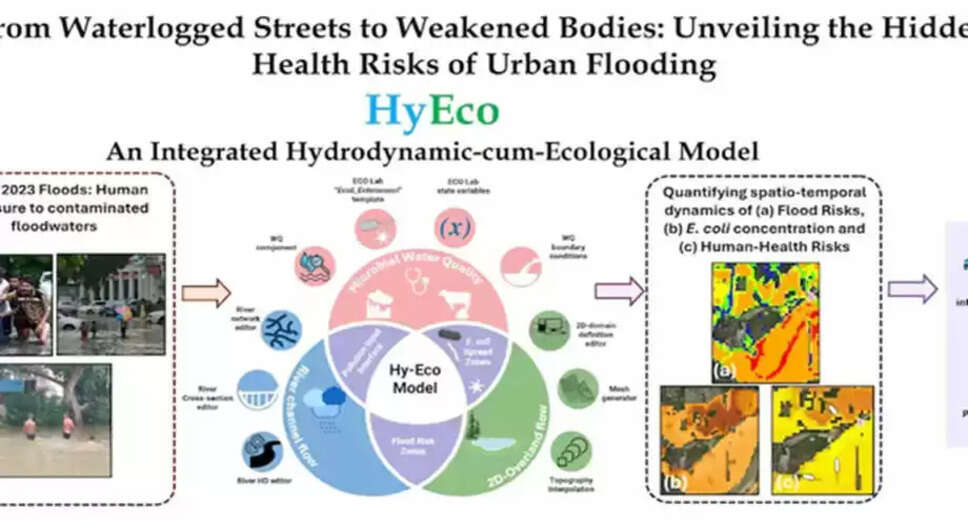IIT Roorkee Unveils Innovative Flood-Water Quality Modelling Tool

Introduction to HiEco
Researchers at the Indian Institute of Technology Roorkee have introduced 'HiEco', an unprecedented integrated platform for modelling flood-water quality. This innovative tool not only forecasts the spread of urban floodwaters but also tracks the potential dissemination of harmful microbes, highlighting areas where the population may be at risk.
Impact of the 2023 Delhi Floods
The framework was evaluated during the severe floods in Delhi in 2023. The findings were alarming: over 60% of the affected regions fell within high to very high-risk categories, with E. coli levels exceeding safe limits by over a million times. Particularly concerning was the risk to children, who faced infection levels more than double the internationally recognized safety threshold while playing in contaminated waters.
Health Risks from Contaminated Floodwater
In numerous Indian cities, floodwaters mix with untreated sewage and industrial waste, creating a hazardous environment that can facilitate the spread of diseases such as cholera and diarrhoea. HiEco aims to assist authorities in predicting these health threats, pinpointing 'health risk hotspots', and enabling timely interventions. This could involve enhancing sewage treatment, cleaning drainage systems before the monsoon, sending SMS alerts to residents, and employing advanced water purification techniques.
Supporting National and Global Initiatives
This research aligns with several key initiatives of the Government of India, including the National Mission for Clean Ganga, Swachh Bharat Mission, National Disaster Management Plan, and National Health Mission. Furthermore, it contributes to achieving various United Nations Sustainable Development Goals (SDGs), such as SDG 3 (good health and well-being), SDG 6 (clean water and sanitation), SDG 11 (sustainable cities and communities), and SDG 13 (climate action).
Expert Insights
Mohit P. Mohanty, a professor in the Department of Water Resources Development and Management at IIT Roorkee, emphasized, "Flooding not only damages infrastructure; it can also trigger health emergencies. HiEco empowers us to identify the highest risk areas, allowing for proactive measures before crises arise."
Professor Kamal Kishore Pant, Director of IIT Roorkee, remarked, "This research exemplifies how science can benefit society. By equipping cities to confront both visible and hidden flood-related dangers, HiEco is poised to significantly enhance the safety and health of communities in India and globally."
Global Applicability of HiEco
HiEco is not only tailored for Indian cities but is also applicable in flood-prone urban areas worldwide, from Mumbai to Manila and Jakarta to New Orleans, offering a sophisticated, science-driven approach to mitigate the risk of waterborne diseases following flooding events.
